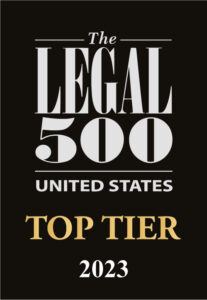Presented below is our summary of significant Internal Revenue Service (IRS) guidance and relevant tax matters for the week of June 29, 2020 – July 3, 2020. Additionally, for continuing updates on the tax impact of COVID-19, please visit our resource page here.
June 29, 2020: The IRS issued a news release announcing that the tax filing and payment deadline of July 15 will not be postponed. However, individual taxpayers may request an automatic extension of time to file until October 15. Individual taxpayers that file Form 1040 series returns must file Form 4868 by July 15 to obtain the automatic extension.
June 29, 2020: The IRS issued corrections to proposed regulations regarding the credit for carbon oxide sequestration under section 45Q. Among other changes, the IRS clarified that the applicable recapture period ends upon five years, and not three years, after the last taxable year in which the taxpayer claimed a tax code section 45Q credit.
June 29, 2020: The IRS published the 2019 IRS Data Book, which summarizes tax filings, revenue collections, taxpayer services, enforcement activities and agency operations. The IRS added new key information to the annual publication and addressed the agency’s response to COVID-19.
June 29, 2020: The IRS added new frequently asked questions regarding filing extension relief for Forms 1139 and 1045. The IRS clarified that Notice 2020-26, which grants a six-month extension to file Forms 1139 and 1045 for certain net operating losses (NOLs), applies to consolidated groups. The IRS also clarified that if Notice 2020-26 extended a taxpayer’s filing date to file Forms 1139 and 1045, and if the extended due date is a date on or after April 1, 2020, and before July 15, 2020, then the taxpayer will also receive relief under Notice 2020-23, which allows taxpayers to file Forms 1139 and 1045 until July 15, 2020.
July 1, 2020: The IRS issued a news release announcing that it added new retail partners that will accept cash payments for federal taxes owed by both individual and business taxpayers.
July 2, 2020: The IRS released proposed regulations and temporary regulations providing guidance regarding NOLs for consolidated groups. The temporary regulations permit consolidated groups that have acquired certain new members to elect to waive all or part of the pre-acquisition portion of certain losses where there is a retroactive statutory extension of the NOL carryback period. Public comments regarding the contemplated rules must be received by August 31, 2020.
July 3, 2020: The IRS released its weekly list of written determinations (e.g., Private Letter Rulings, Technical Advice Memorandums and Chief Counsel Advice).
Special thanks to Robbie Alipour in our Chicago office for this week’s roundup.
read more

 Subscribe
Subscribe




